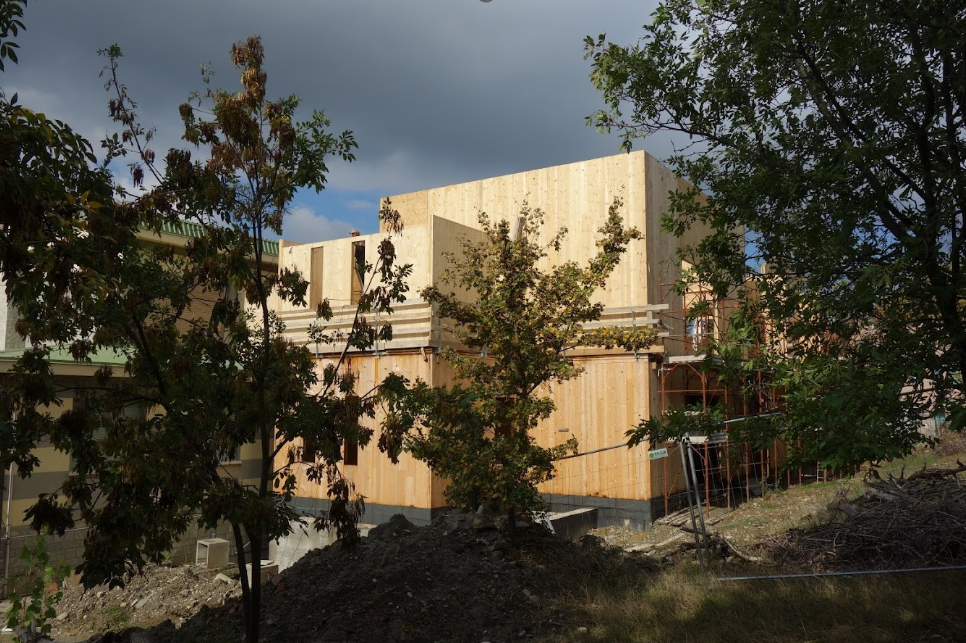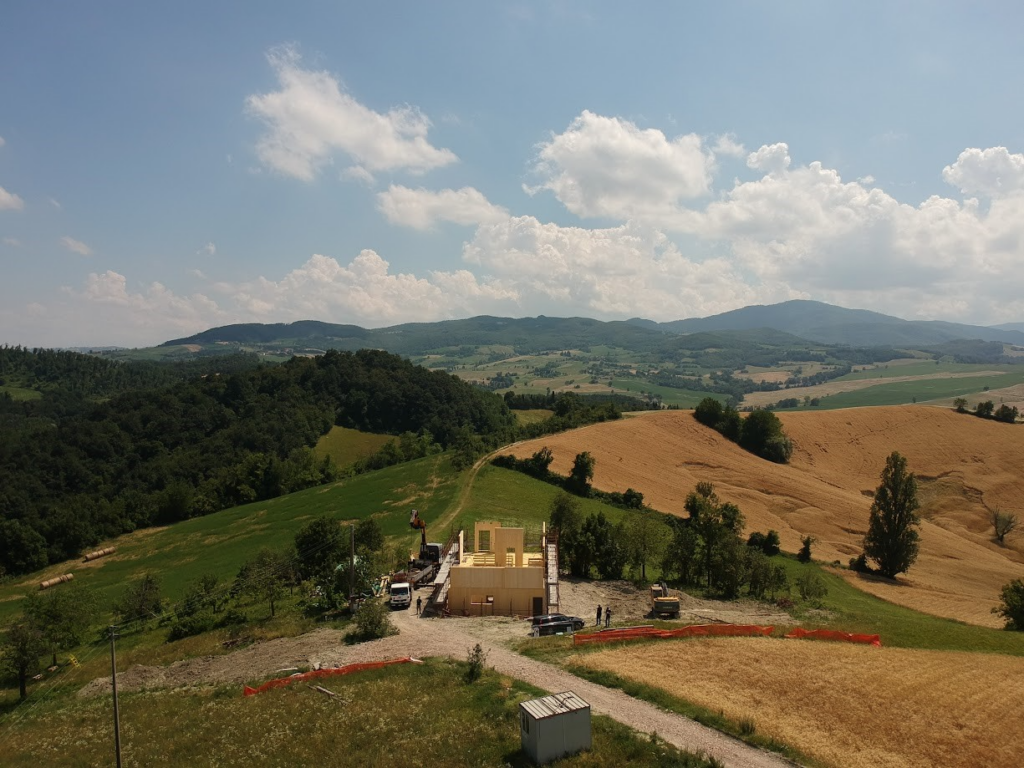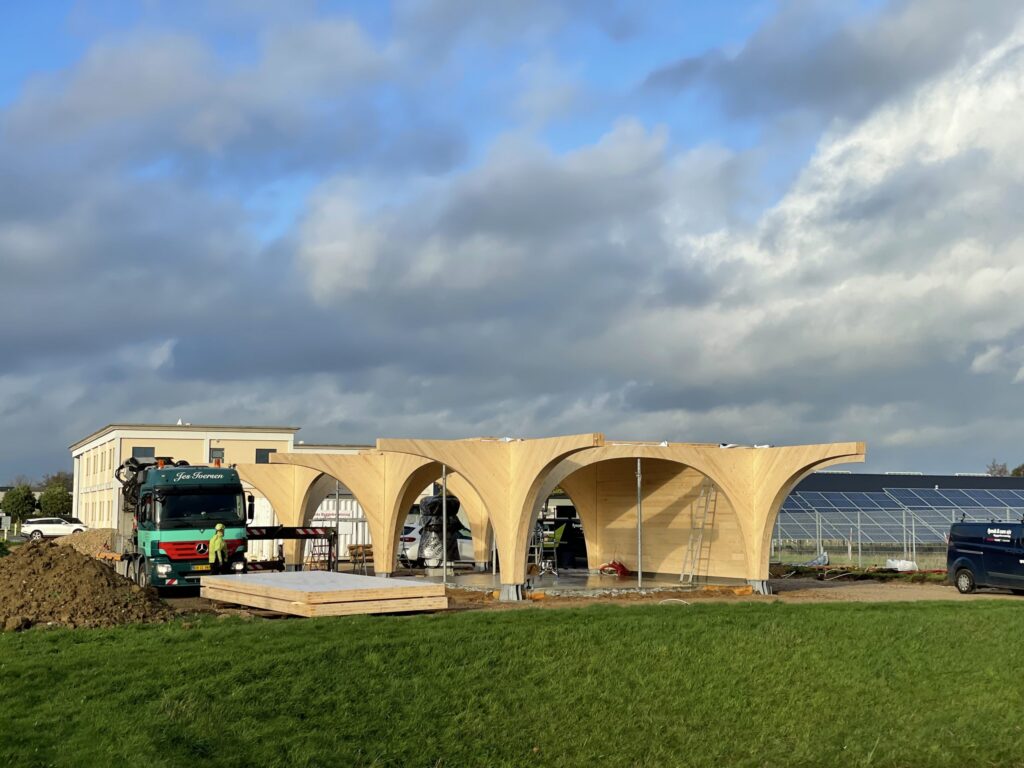The building industry is one of the largest contributors to global CO₂ emissions and waste production. As urbanization continues to rise, so does the environmental impact of construction, largely due to the use of high-emission materials like concrete and steel. In response, mass timber is emerging as a sustainable alternative that can help mitigate climate change by reducing CO₂ emissions.
A Technical Overview
One of the most compelling advantages of mass timber structures is their capacity to sequester carbon. By absorbing CO₂ from the atmosphere during the tree’s growth (and NOT during the building’s life!), timber acts as a natural carbon sink. In this article, I’ll explore the quantifiable impact of a Timber Structure we’re currently engineering near Rome: A Gonfie Vele.
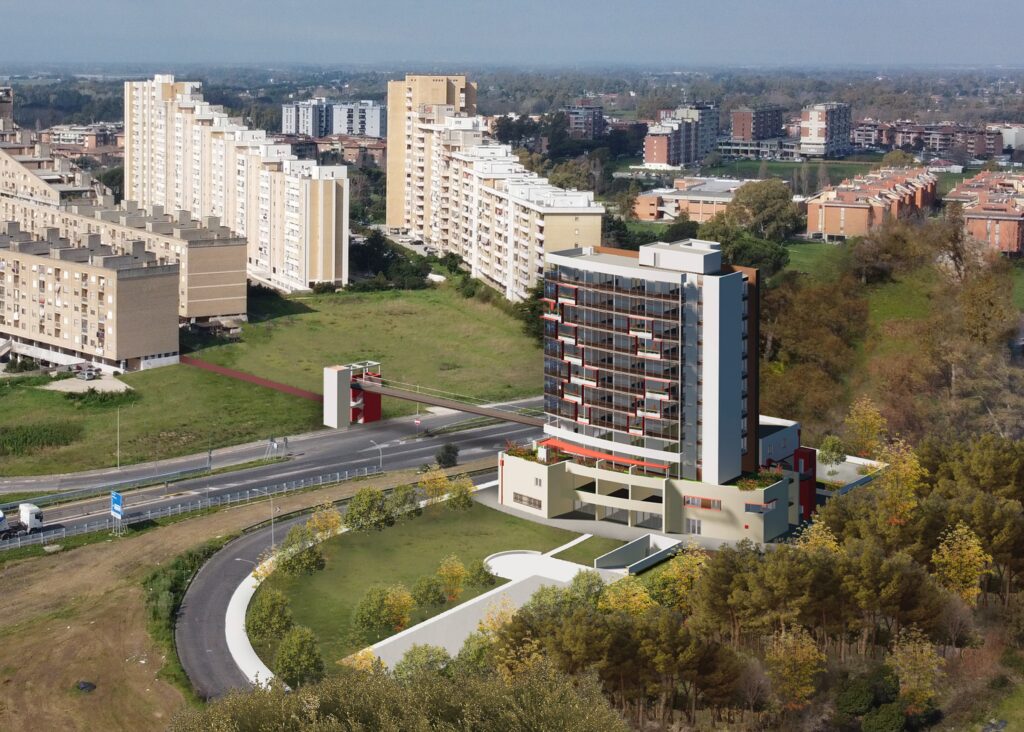
Ergodomus has been involved in this project from day one, which has enabled us to develop optimal solutions for challenges such as value engineering. As Timber Engineers, our deep understanding of timber as a material has guided us in selecting the most cost-effective solutions.
Our expertise also allowed us to calculate the amount of CO2 sequestered by the timber—and it’s a lot! To illustrate the scale of this achievement, we used a real-world comparison to better visualize it.
Carbon Sequestration in Timber Structures
As trees grow, they absorb carbon dioxide from the air, using it to form cellulose, lignin, and other compounds that make up their structure. For every cubic meter of wood, approximately 0.9 tons of CO₂ is stored. In a mass timber building, this carbon remains locked away for the lifetime of the structure. This feature makes timber not just a sustainable building material, but also a key player in fighting climate change.
In this case, the mass timber structure will capture approx. 2,000 tons of CO₂! (If you’d like to learn how we arrived at this result, check out our Technical Article, where we explain how to calculate the amount of CO2 stored in timber). Let’s see what it means in terms of car emissions.
Discover The Shelter, our project in Modena, by clicking here!
Calculating the CO₂ Impact: A Car Emissions Analogy
Based on the European statistics, an average car emits about 110 grams of CO₂ per kilometer driven: this means that 2,000 tons are equivalent to about

18.1 million kilometers.
Let’s consider an average of 25,000km/year per car. This brings us to about

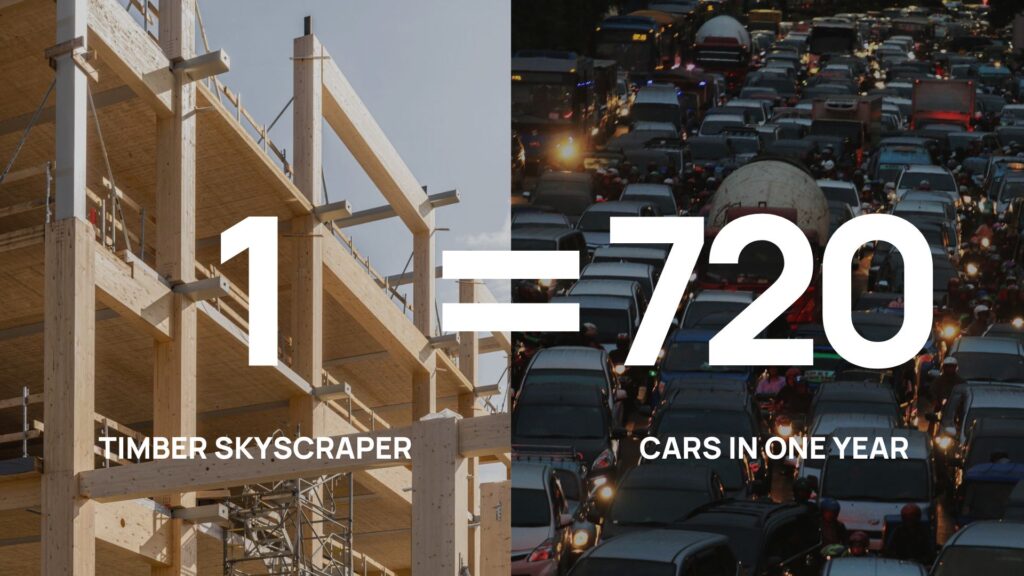
This comparison highlights the remarkable carbon-saving potential of mass timber buildings. By using timber as a primary building material, the structure offsets emissions equivalent to those produced by a quite big fleet of cars over a significant period.
The Broader Environmental Benefits
Beyond storing CO₂, the use of mass timber in construction has other environmental benefits:
- Reduction of Embodied Carbon: Traditional building materials such as steel and concrete produce a large amount of carbon, largely due to their energy-intensive manufacturing processes. Replacing these materials with timber significantly reduces the overall embodied carbon of a building.
- Renewable and Sustainable: Timber is a renewable resource when sourced responsibly from well-managed forests. Sustainable forestry practices ensure balance, with new trees being planted to replace harvested ones, continuing the carbon sequestration process.
- Improved Thermal Performance: Timber also has excellent insulating properties, which can contribute to lower operational energy requirements for heating and cooling, further reducing the carbon footprint of a building.
The Path Forward: Scaling Timber Adoption in Construction
The carbon sequestration potential demonstrated by this 2,000-ton example is just one piece of the puzzle. If more buildings were constructed using mass timber, the cumulative impact on global CO₂ levels would be significant. However, for mass timber to play a larger role, there are challenges to overcome, including the need for greater awareness of its benefits, enhanced supply chains for timber products, and further refinement of building codes and standards to encourage its use.
Another challenge is to educate the designers, both architects and engineers, and all the players in the building industry, especially the developers.
Conclusion
This case study illustrates the tangible benefits of carbon sequestration through mass timber construction. With 2,000 tons of CO₂ captured, this structure alone represents a significant contribution to reducing greenhouse gas emissions. When scaled, the adoption of mass timber could be a key strategy in the global effort to decarbonize the building industry. By combining sustainable forestry practices, efficient building designs, and innovative engineering, mass timber has the potential to reshape the future of construction, turning buildings into active carbon storage solutions. All these benefits are achievable only by working with industry experts, that’s why hiring a Timber Engineer since day 1 is crucial. As Timber Engineers we know the best practices of this field, how to implement Timber in the best possible way, and how tailor-made solutions are the key to the success of a project.



